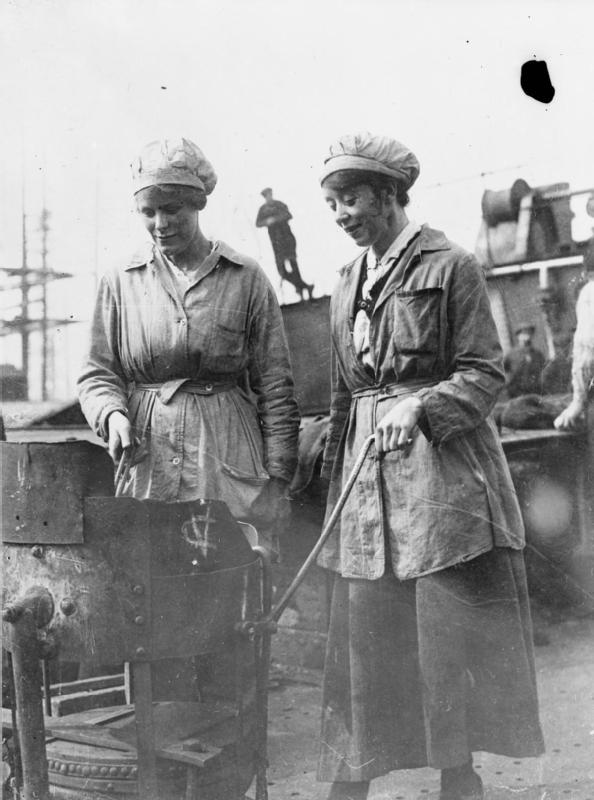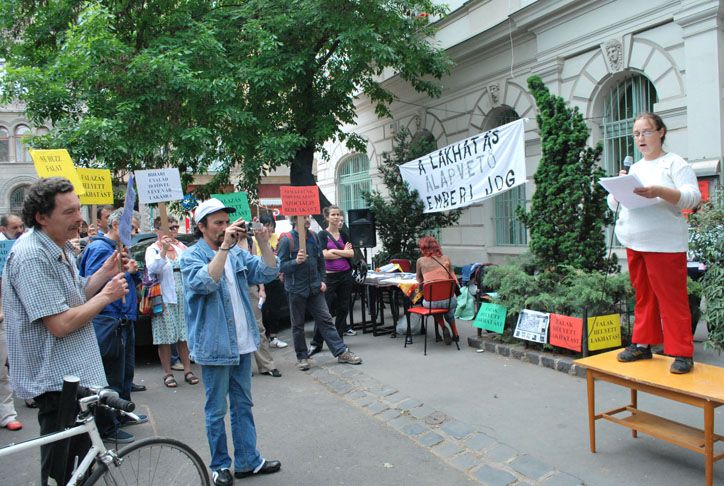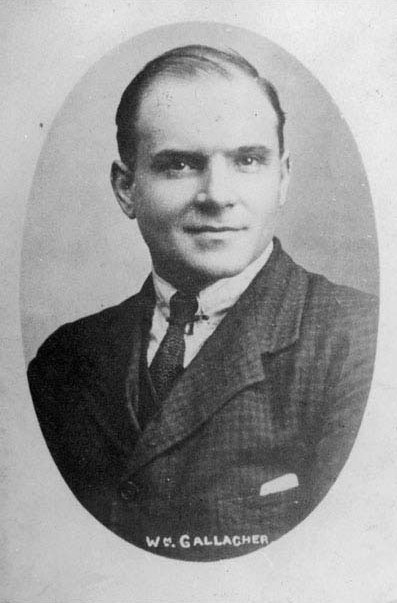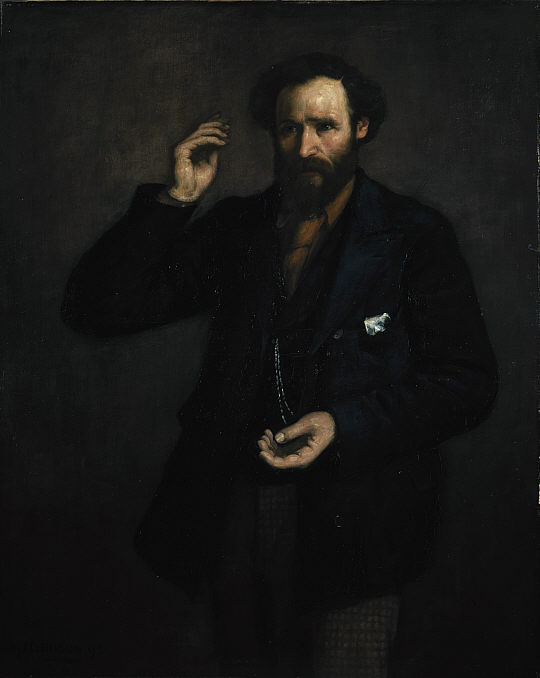|
The Women's Peace Crusade
The Women's Peace Crusade was a grassroots socialist movement that spread across Great Britain between 1916 and 1918. Its central aim was to spread a 'people's peace', which was defined as a negotiated end to the First World War without any annexations or indemnities. The movement was first established in Glasgow in July 1916, and officially launched on 10 June 1917. It later spread across Great Britain, with demonstrations taking place in Leeds, Bradford, Leicester, Birmingham and Lancashire. Although it gathered a substantial following, the Women's Peace Crusade faced opposition from both the government and police, with members being arrested and reportedly threatened. Origins The outbreak of war caused a schism within the pre-war efforts for women's suffrage as individuals within the Suffrage movement took various stances with regards to the necessary morality of Great Britain entering the ever widening war footing that developed among neighbouring European Nations after ... [...More Info...] [...Related Items...] OR: [Wikipedia] [Google] [Baidu] |
Helen Crawfurd
Helen Crawfurd ( Jack, later Anderson; 9 November 1877 – 18 April 1954) was a Scottish suffragette, rent strike organiser, Communist activist and politician. Born in Glasgow, she was brought up there and in London. Biography Born Helen Jack at 175 Cumberland Street in the Gorbals area of Glasgow, her parents were Helen L. ( Kyle) and William Jack. Her mother worked a steam-loom before she wed. Helen's family moved to Ipswich while she was young. Crawfurd later went to school in London and Ipswich before moving back to Glasgow as a teenager. Crawfurd's father, a master baker, was a Catholic, but converted to the Church of Scotland and became a conservative trade unionist. Initially religious herself and a Sunday School teacher, Crawfurd felt a call to be married at 21 to the 67-year-old widower Alexander Montgomerie Crawfurd (29 August 1828 – 31 May 1914), a Church of Scotland minister and family friend. but he became increasingly radical.A. T. Lane, ed., ''Biographical Dic ... [...More Info...] [...Related Items...] OR: [Wikipedia] [Google] [Baidu] |
Women's Social And Political Union
The Women's Social and Political Union (WSPU) was a women-only political movement and leading militant organisation campaigning for women's suffrage in the United Kingdom from 1903 to 1918. Known from 1906 as the suffragettes, its membership and policies were tightly controlled by Emmeline Pankhurst and her daughters Christabel and Sylvia; Sylvia was eventually expelled. The WSPU membership became known for civil disobedience and direct action. Emmeline Pankhurst described them as engaging in a "reign of terror". Group members heckled politicians, held demonstrations and marches, broke the law to force arrests, broke windows in prominent buildings, set fire to or introduced chemicals into postboxes thus injuring several postal workers, and committed a series of arsons that killed at least five people and injured at least 24. When imprisoned, the group's members engaged in hunger strikes and were subject to force-feeding. Emmeline Pankhurst said the group's goal was "to make En ... [...More Info...] [...Related Items...] OR: [Wikipedia] [Google] [Baidu] |
Grassroots
A grassroots movement is one that uses the people in a given district, region or community as the basis for a political or economic movement. Grassroots movements and organizations use collective action from the local level to effect change at the local, regional, national or international level. Grassroots movements are associated with bottom-up, rather than top-down decision making, and are sometimes considered more natural or spontaneous than more traditional power structures. Grassroots movements, using self-organization, encourage community members to contribute by taking responsibility and action for their community. Grassroots movements utilize a variety of strategies from fundraising and registering voters, to simply encouraging political conversation. Goals of specific movements vary and change, but the movements are consistent in their focus on increasing mass participation in politics. These political movements may begin as small and at the local level, but grassroots ... [...More Info...] [...Related Items...] OR: [Wikipedia] [Google] [Baidu] |
Working Class
The working class (or labouring class) comprises those engaged in manual-labour occupations or industrial work, who are remunerated via waged or salaried contracts. Working-class occupations (see also " Designation of workers by collar colour") include blue-collar jobs, and most pink-collar jobs. Members of the working class rely exclusively upon earnings from wage labour; thus, according to more inclusive definitions, the category can include almost all of the working population of industrialized economies, as well as those employed in the urban areas (cities, towns, villages) of non-industrialized economies or in the rural workforce. Definitions As with many terms describing social class, ''working class'' is defined and used in many different ways. The most general definition, used by many socialists, is that the working class includes all those who have nothing to sell but their labour. These people used to be referred to as the proletariat, but that term has gone out of ... [...More Info...] [...Related Items...] OR: [Wikipedia] [Google] [Baidu] |
Women's International League, 5
A woman is an adult female human. Prior to adulthood, a female human is referred to as a girl (a female child or adolescent). The plural ''women'' is sometimes used in certain phrases such as "women's rights" to denote female humans regardless of age. Typically, women inherit a pair of X chromosomes, one from each parent, and are capable of pregnancy and giving birth from puberty until menopause. More generally, sex differentiation of the female fetus is governed by the lack of a present, or functioning, SRY-gene on either one of the respective sex chromosomes. Female anatomy is distinguished from male anatomy by the female reproductive system, which includes the ovaries, fallopian tubes, uterus, vagina, and vulva. A fully developed woman generally has a wider pelvis, broader hips, and larger breasts than an adult man. Women have significantly less facial and other body hair, have a higher body fat composition, and are on average shorter and less muscular than men. Througho ... [...More Info...] [...Related Items...] OR: [Wikipedia] [Google] [Baidu] |
Annexation
Annexation (Latin ''ad'', to, and ''nexus'', joining), in international law, is the forcible acquisition of one state's territory by another state, usually following military occupation of the territory. It is generally held to be an illegal act.: "Annexation means the forcible acquisition of territory by one State at the expense of another State. It is one of the principal modes of acquiring territory... in contrast to acquisition a) of terra nullius by means of effective occupation accompanied by the intent to appropriate the territory; b) by cession as a result of a treaty concluded between the States concerned (Treaties), or an act of adjudication, both followed by the effective peaceful transfer of territory; c) by means of prescription defined as the legitimization of a doubtful title to territory by passage of time and presumed acquiescence of the former sovereign; d) by accretion constituting the physical process by which new land is formed close to, or becomes attached to ... [...More Info...] [...Related Items...] OR: [Wikipedia] [Google] [Baidu] |
Springburn
Springburn ( gd, Allt an Fhuairainn) is an inner-city district in the north of the Scottish city of Glasgow, made up of generally working-class households. Springburn developed from a rural hamlet at the beginning of the 19th century. Its industrial expansion began with the establishment of a chemical works by Charles Tennant on the newly opened Monkland Canal at nearby St. Rollox in 1799, which later became part of the United Alkali Company. Later in the 19th century, the construction of railway lines through the area led to the establishment of railway works and the village became a parish in its own right. The Garnkirk and Glasgow Railway first opened in 1831 to supply the St. Rollox Chemical Works and the Edinburgh & Glasgow Railway was opened in 1842. Later, the City Union Line was extended to Springburn in 1871, and the Hamiltonhill Branch Line opened in 1894. Initially located outside the Glasgow boundary, the core area was eventually absorbed by the city in 1872 and o ... [...More Info...] [...Related Items...] OR: [Wikipedia] [Google] [Baidu] |
Maryhill
Maryhill ( gd, Cnoc Màiri) is an area of the City of Glasgow in Scotland. Maryhill is a former burgh. Maryhill stretches over along Maryhill Road. The far north west of the area is served by Maryhill railway station. History Hew Hill, the Laird, or Lord, of Gairbraid, had no male heir and so he left his estate to his daughter, Mary Hill (1730-1809). She married Robert Graham of Dawsholm in 1763, but they had no income from trade or commerce and had to make what they could from the estate. They founded coalmines on the estate but they proved to be wet and unprofitable. On 8 March 1768 Parliament approved the cutting of the Forth and Clyde Canal through their estate, which provided some much-needed money. The canal reached the estate in 1775, but the canal company had run out of money and work stopped for eight years. The Government granted funds from forfeited Jacobite estates to start it again and the crossing of the River Kelvin became the focus for massive constructi ... [...More Info...] [...Related Items...] OR: [Wikipedia] [Google] [Baidu] |
Labour Leader
The ''Labour Leader'' was a British socialist newspaper published for almost one hundred years. It was later renamed ''New Leader'' and ''Socialist Leader'', before finally taking the name ''Labour Leader'' again. 19th century The origins of the paper lay in ''The Miner'', a monthly paper founded by Keir Hardie in 1887. Its main purpose was to advocate for a federation of Scottish miners."Hardie, (James) Keir", Oxford Dictionary of National Biography The first issue contained an influential programme for labour, co-authored by Hardie and Chisholm Robertson,David Howell, ''British Workers and the Independent Labour Party, 1888-1906'', p.146 marking Hardie's switch from support for the Liberal Party to advocating independent labour candidacies. The paper was used as Hardie's platform in the 1888 Mid Lanarkshire by-election, following which Hardie became a founder member of the Scottish Labour Party and relaunched ''The Miner'' as the ''Labour Leader''. In 1893 the Scottish Labou ... [...More Info...] [...Related Items...] OR: [Wikipedia] [Google] [Baidu] |
Glasgow Rent Strikes 1915
Red Clydeside was the era of political radicalism in Glasgow, Scotland, and areas around the city, on the banks of the River Clyde, such as Clydebank, Greenock, Dumbarton and Paisley, from the 1910s until the early 1930s. Red Clydeside is a significant part of the history of the labour movement in Britain as a whole, and Scotland in particular. Some newspapers of the time used the term "Red Clydeside" to refer, largely derisively, to the groundswell of popular and political radicalism that had erupted in Scotland. A confluence of charismatic individuals, organised movements and socio-political forces led to Red Clydeside, which had its roots in working-class opposition to Britain's participation in the First World War, although the area had a long history of political radicalism going back to the Society of the Friends of the People and the " Radical War" of 1820. 1911 strike at Singer The 11,000 workers at the largest Singer sewing machines factory, in Clydebank, went on ... [...More Info...] [...Related Items...] OR: [Wikipedia] [Google] [Baidu] |
Feminism
Feminism is a range of socio-political movements and ideologies that aim to define and establish the political, economic, personal, and social equality of the sexes. Feminism incorporates the position that society prioritizes the male point of view and that women are treated unjustly in these societies. Efforts to change this include fighting against gender stereotypes and improving educational, professional, and interpersonal opportunities and outcomes for women. Feminist movements have campaigned and continue to campaign for women's rights, including the right to vote, run for public office, work, earn equal pay, own property, receive education, enter contracts, have equal rights within marriage, and maternity leave. Feminists have also worked to ensure access to contraception, legal abortions, and social integration and to protect women and girls from rape, sexual harassment, and domestic violence. Changes in female dress standards and acceptable physical act ... [...More Info...] [...Related Items...] OR: [Wikipedia] [Google] [Baidu] |
Independent Labour Party
The Independent Labour Party (ILP) was a British political party of the left, established in 1893 at a conference in Bradford, after local and national dissatisfaction with the Liberals' apparent reluctance to endorse working-class candidates, representing the interests of the majority. A sitting independent MP and prominent union organiser, Keir Hardie, became its first chairman. The party was positioned to the left of Ramsay MacDonald's Labour Representation Committee, which was founded in 1900 and soon renamed the Labour Party, and to which the ILP was affiliated from 1906 to 1932. In 1947, the organisation's three parliamentary representatives defected to the Labour Party, and the organisation rejoined Labour as Independent Labour Publications in 1975. Organisational history Background As the nineteenth century came to a close, working-class representation in political office became a great concern for many Britons. Many who sought the election of working men and thei ... [...More Info...] [...Related Items...] OR: [Wikipedia] [Google] [Baidu] |





.jpg)




